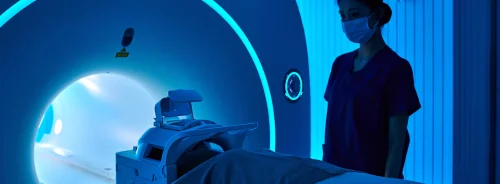Acute neck infections demand swift imaging and clear triage to prevent complications and guide treatment. Magnetic resonance imaging (MRI) offers high soft tissue contrast and can reveal characteristic swelling that reflects disease severity. A multicentre team examined whether clinicians from different backgrounds can recognise two specific MRI patterns linked to worse outcomes: retropharyngeal oedema (RPE) and mediastinal oedema (ME). Using a standardised protocol, readers assessed emergency MRI scans and recorded their confidence and reading times. Performance and agreement were compared against a neuroradiology consensus. The findings indicate that these patterns can be identified quickly and consistently in emergency settings, supporting their use as pragmatic markers for risk assessment where MRI is available.
Multicentre Evaluation
Clinicians from radiology and head and neck surgery took part, representing a mix of residents, general radiologists, subspecialists in neuroradiology or head and neck radiology and surgeons from academic centres. Readers were blinded to clinical details and to one another’s assessments. Before reading, they received brief written instructions and a tutorial video explaining the web platform used for viewing, which allowed scrolling, windowing, panning and zooming.
Must Read: Imaging Guidance for Acute Head and Neck Infections
Cases were drawn from a registry of patients with clinically confirmed acute neck infections who underwent emergency MRI. The test set reflected the spectrum of disease seen in practice, including a broad age range and frequent abscess formation. Readers evaluated axial fluid-sensitive, fat-suppressed images that are widely used in neck MRI. To ensure a common understanding, definitions were standardised. RPE referred to a hyperintense band behind the pharyngeal wall and in front of the spine, and ME referred to hyperintense soft tissues at or below the thoracic inlet. A neuroradiology consensus served as the reference standard for both patterns, and a subset of cases was repeated to assess intraobserver consistency.
Reliable Recognition Across Disciplines
Overall diagnostic performance was high for both RPE and ME, with strong intraobserver consistency. Agreement between readers was substantial for RPE and moderate for ME, reflecting the relative ease of assessing retropharyngeal tissues compared with the upper mediastinum on neck MRI. Variability in ME assessments likely relates to technical and anatomical factors that can make conspicuity more challenging on neck-focused protocols.
Radiologists outperformed surgeons on key measures for both patterns. This difference aligns with the greater familiarity radiologists have with nuanced MRI signal characteristics and pattern recognition in complex anatomy. Even so, surgeons achieved solid performance, indicating that with clear definitions and minimal onboarding, recognition of these patterns is feasible beyond specialist neuroradiology practice. Across groups, correctly ruling patterns out was generally harder than recognising their presence, particularly for RPE, suggesting a tendency towards overcalling in uncertain cases. Despite this, the overall balance of correct decisions supports the use of RPE and ME as dependable elements of emergency image interpretation.
Confidence ratings were high for both patterns. At the case level, higher confidence tracked with correctness, indicating that readers were generally well calibrated. Where confidence rose, errors fell, especially for ME, underscoring the value of asking readers to record how sure they are alongside a binary decision. This simple step can provide an operational cue for when to seek a second opinion, review additional sequences or correlate with clinical findings before escalating care.
Speed, Learning Curve and Practical Use
Reading times were short, consistent with the goal of supporting rapid decision-making in emergency pathways. As readers progressed through cases, time per case decreased, indicating a learning effect even with brief initial guidance. A small tendency for longer reads to accompany more errors was observed, implying that prolonged hesitation may signal uncertainty rather than carefulness. These operational insights suggest that standard definitions, brief training and simple confidence prompts can help teams integrate RPE and ME checks without slowing the workflow.
Implementation considerations emerged that are relevant for service planning and quality assurance. The reference standard was based on expert image consensus rather than histopathology or operative findings, which is appropriate for imaging markers but remains a limitation. Scans were acquired on a single 3 T system with specific sequences, differences in field strength, vendor or fat suppression performance could influence visibility, particularly for ME near the thoracic inlet. Emergency MRI availability varies across institutions, and adoption depends on local access and protocol consistency. The test set sampling mirrored reported prevalence of RPE and slightly over-represented ME, introducing minor selection effects, and the study size did not target a formal power calculation. Taken together, these factors argue for local validation, focusing on protocol optimisation, reader onboarding and cross-disciplinary communication.
Standardised recognition of retropharyngeal and mediastinal oedema on emergency MRI can be achieved quickly, with high confidence and consistent decisions across readers and with strongest performance among radiologists. Recording confidence alongside the binary read offers a simple way to flag cases for additional review. Where MRI is part of the acute pathway, embedding these patterns into routine interpretation can strengthen risk assessment and support timely escalation. Attention to protocol quality, brief training and local validation will help teams achieve reproducible results and extend the benefits of these imaging markers across emergency care.
Source: European Journal of Radiology
Image Credit: iStock





